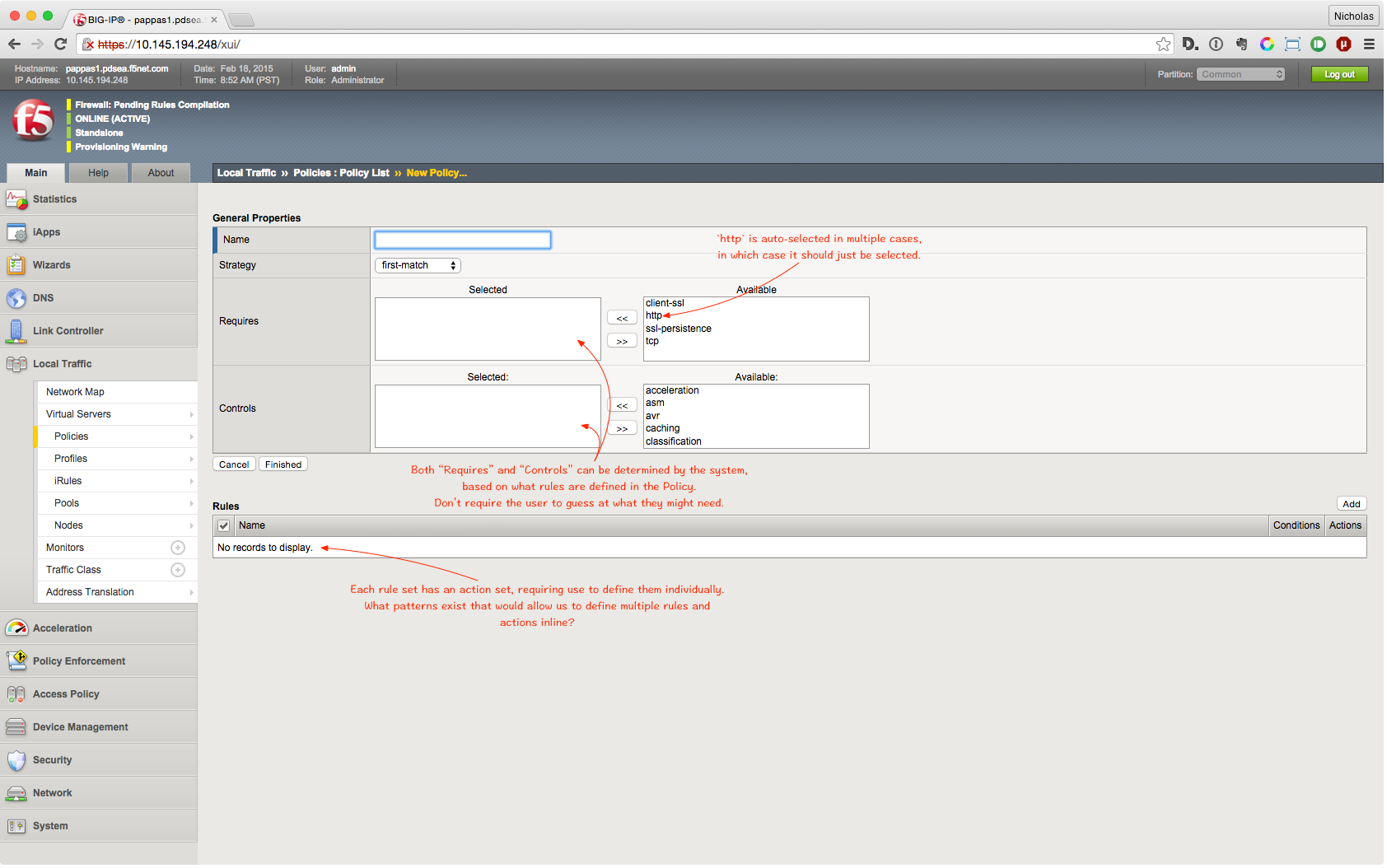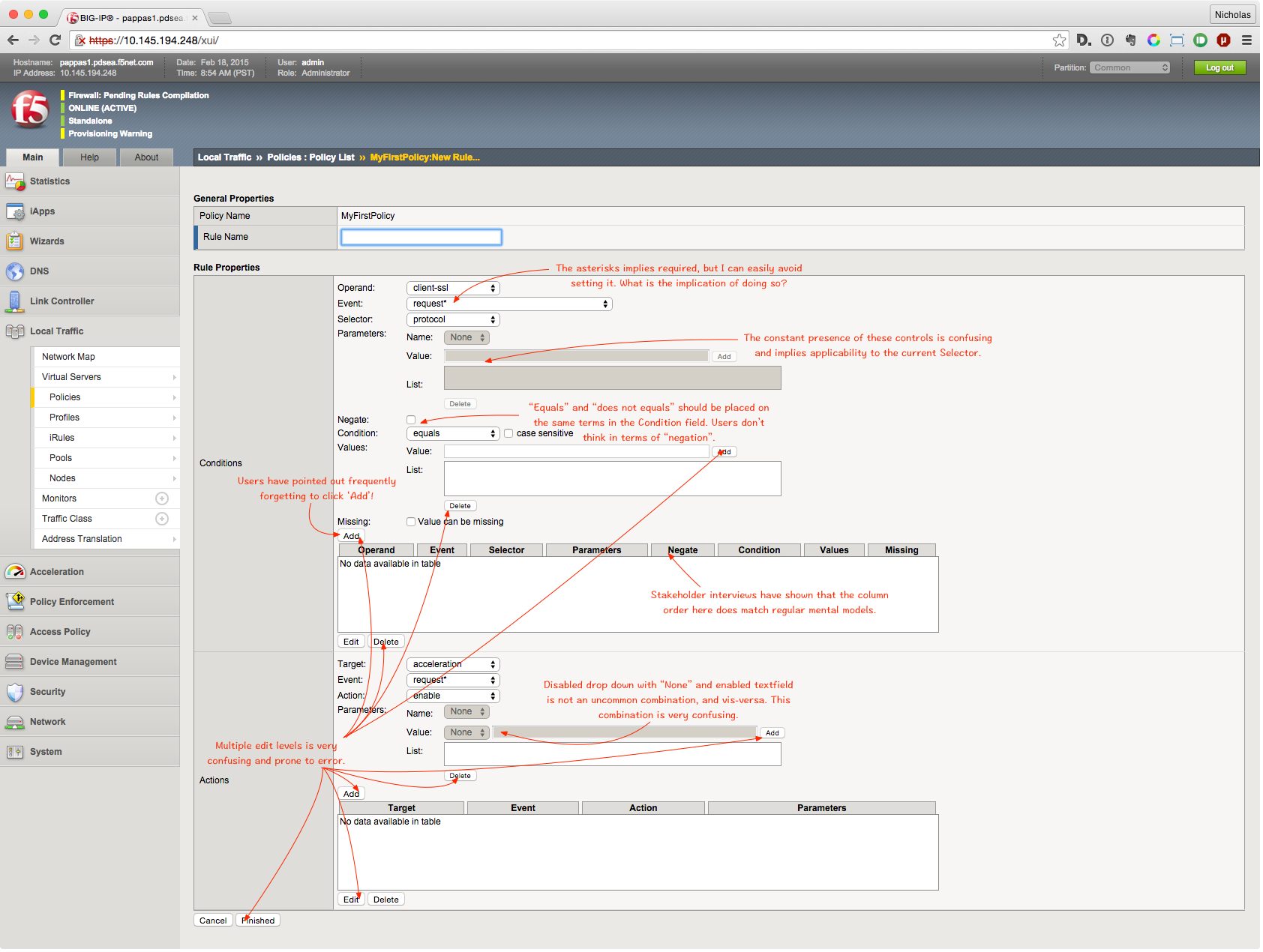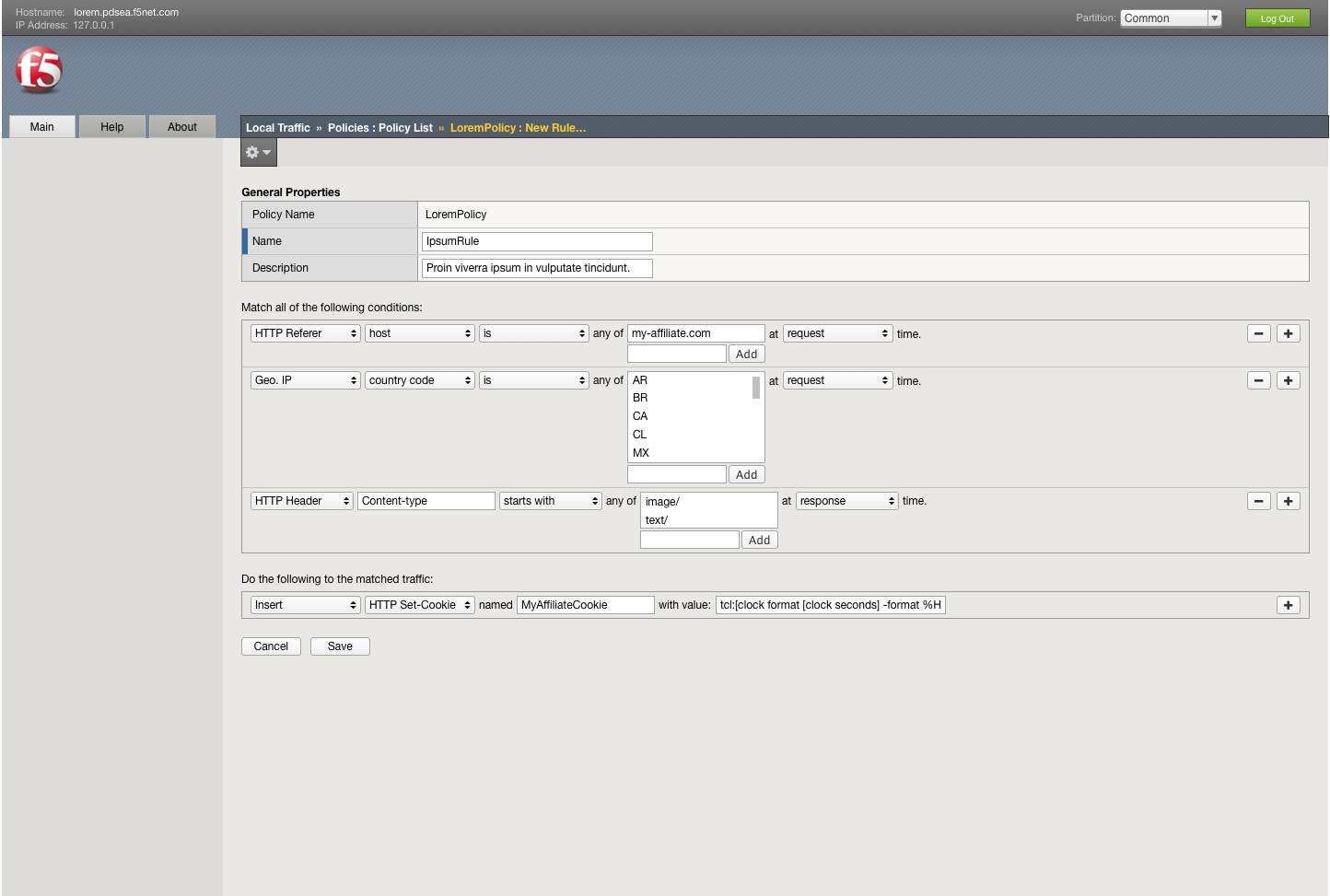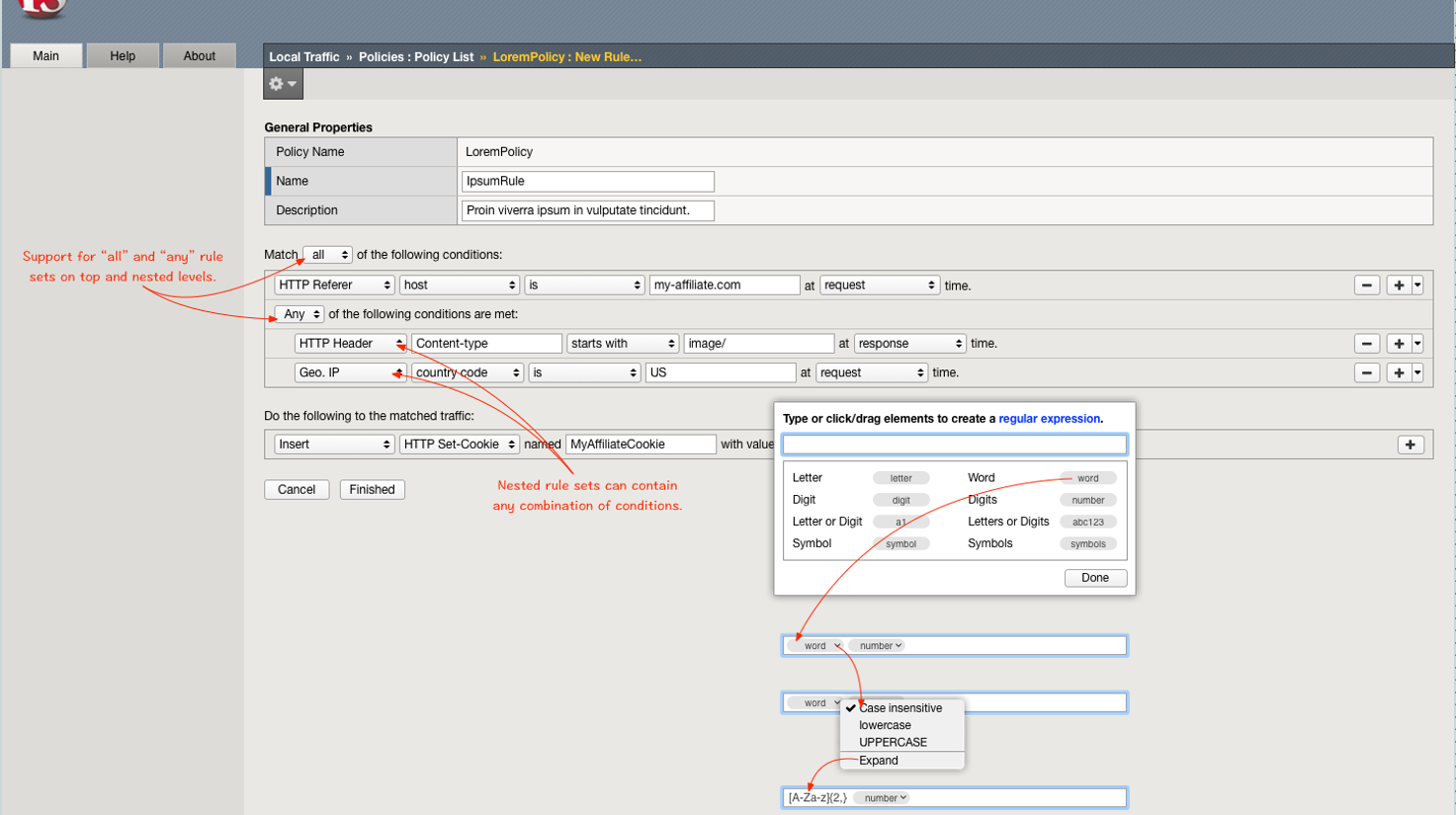Developer Trust
Back to ProjectsSummary
Seeing low feature adoption, we saw an opportunity to transform a complex data-driven GUI into an intuative natural language rule editor that enabled seamless collaboration between users and the system. By focusing on creating a conversation-like interaction and quantitative design validation, I successfully improved the usability and adoption of the Traffic Policies feature while gaining the trust of the initially skeptical development team.
Role
Principal UX Designer
Company
F5 Networks
Problem Framing
System first thinking.
F5 Networks' Traffic Policies feature suffered from minimal use due to its confusing, data-driven UI that forced users to fully understand the inner workings of the feature to configure a policy. The feature's adoption was hindered by the lack of a user-centric approach in its design.


- Time to CompleteExtensive time spect to complete 10 use cases.
- AbandonmentUsers frequently got lost and gave up.
- ErrorUncertainty in relationships caused confusion.
- SUSUncertainty in relationships caused confusion.
Working as a Team
My Role
As the lead product designer, I conducted all facets of the redesign, collaborating with a cross-functional team of developers and stakeholders. My role was to bridge the gap between the users' needs and the system's capabilities, while also building trust with the development team.
Our Approach
To gain the trust of the development team, I began by conducting heuristic evaluations of the existing GUI and discussing the issues with developers during weekly design coordination meetings. This collaborative approach allowed me to provide respectful feedback, understand the reasoning behind the original design decisions, and communicate the benefits of a user-centered design process.

I then focused on creating a natural language rule editor that would enable seamless collaboration between the user and the system. By analyzing user input from interviews and use cases, I identified the need for a rule editor that could represent each rule as a readable, understandable sentence.
Challenges
One of the main challenges was the development team's unfamiliarity with user-centered design processes. To overcome this, I regularly communicated the project's status and the importance of focusing on the user's needs. Additionally, the feature's underutilization meant making design decisions in the face of ambiguity and uncertainty, which required a data-driven approach to validation.
Solution
Conversational Interface
The solution was a natural language rule editor that represented each rule as a sentence, allowing users with no previous experience to easily read and understand the feature. This approach enabled the user and the system to collaborate more effectively, as they could now communicate in a shared language.


Results and Impact
To validate the design, I conducted user testing on ten functional use cases and compared the results with the original design. The data showed significant improvements in time to complete tasks, reduced abandonment, and decreased error rates, demonstrating the effectiveness of the natural language rule editor.
The natural language rule editor resulted in a 32% reduction in time to complete tasks, a 43% decrease in abandonment, and a 21% reduction in errors compared to the original design. These data-driven results helped to further gain the trust of the development team in the user-centered design process.
- Time to CompleteA conversation reduces time.
- AbandonmentRelationships continued to confuse.
- ErrorTcl and RegEx tasks didn't help the user.
- SUSPrevious users were very happy.
Next Steps
Setting a path forwmard
To address the remaining abandonment and errors, I implemented two additional design actions based on user input: a popover for text fields accepting regular expressions and the reintroduction of nesting into the design. Further user testing validated these improvements, resulting in even better metrics.

- Time to CompleteStreamlinging the conversation reduced time on task.
- AbandonmentWorking together keeps the user engaged.
- ErrorThe system helps with the more difficult tasks.
- SUSSatisfaction of new users was still high.
By focusing on user-system collaboration through a natural language rule editor and validating design decisions with data, I successfully improved the usability and adoption of F5 Networks' Traffic Policies feature while gaining the trust of the development team in the user-centered design process.
